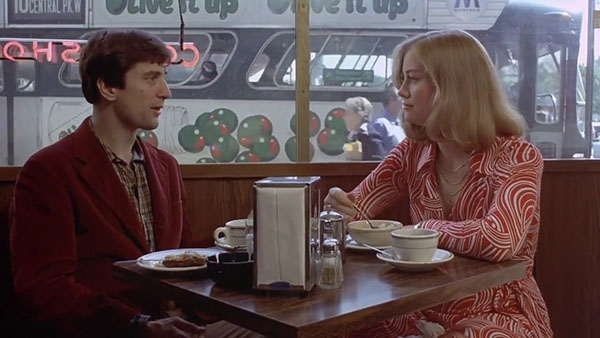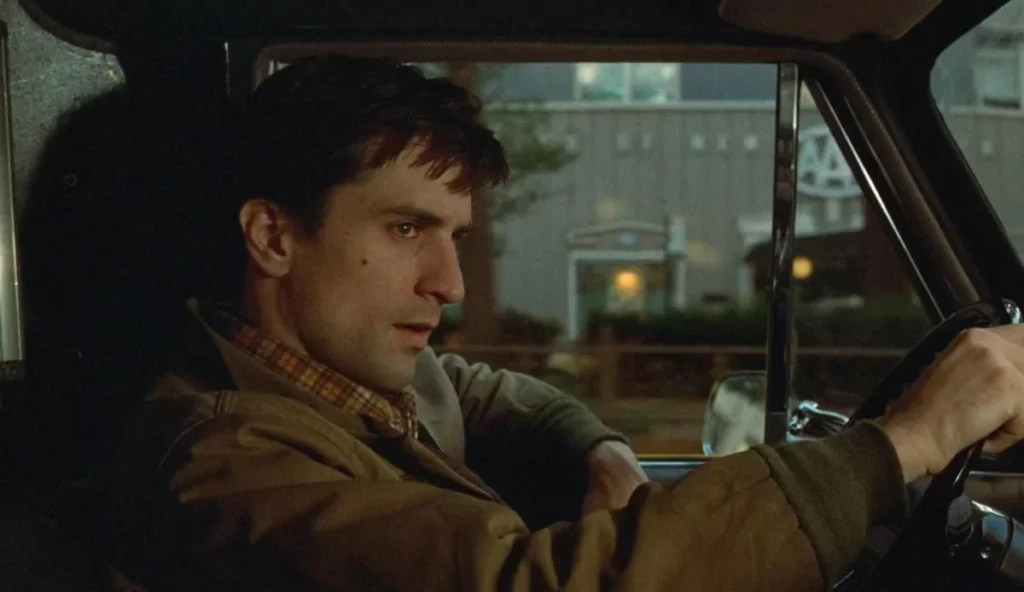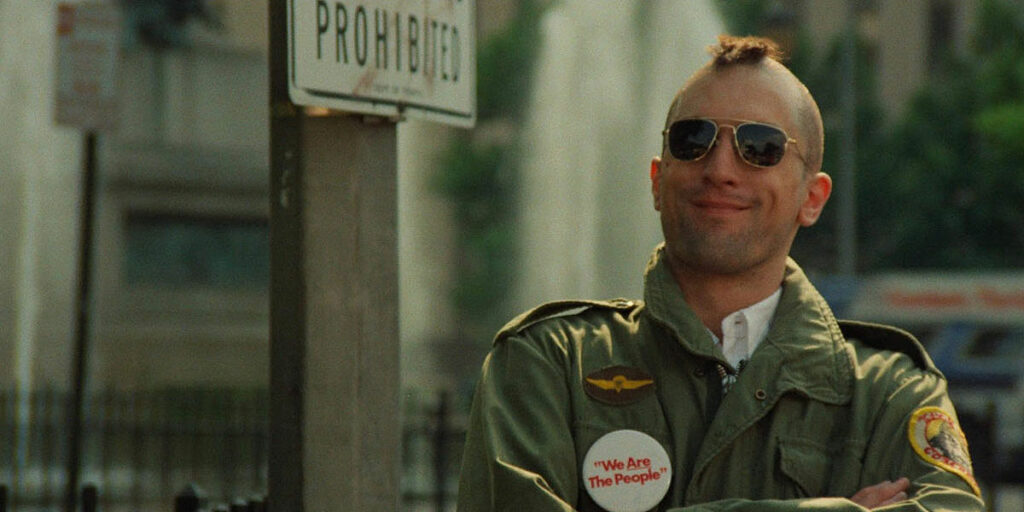Our analysis of Taxi Driver reveals how the film provides a sickening, fascinating look into the depths of the human psyche.
This analysis contains spoilers for ‘Taxi Driver’ (1976).
One could summarize Martin Scorsese’s career as an exploration of both the spiritual and the profane. His films often portray the demise of powerful people due to excess vices (Goodfellas, The Wolf of Wall Street). Scorsese, a “lapsed Catholic” by his own admission, has also tackled more explicitly religious topics (The Last Temptation of Christ, Silence). These questions of spirituality and sin began early with Taxi Driver (1976), a film that has entered the public lexicon, but may not get the attention it deserves as, ultimately, a spiritual journey.
The film follows Travis Bickle (Robert de Niro), a lonely veteran who has been forgotten and abandoned by society. He takes up a job as a taxi driver to avoid his own loneliness, only to be exposed to the corruption and hypocrisy of the outside world. Think of the New York portrayed in Taxi Driver as a symbol for the human psyche, with the capacity for both good and evil. The beautiful neon lights shine down onto the “scum,” as Bickle describes the city’s inhabitants. Bickle meets a wide variety of characters, some meant to represent the good, and many meant to represent the evil that lurks within us.
Bickle, whose journal entries serve as narration for the film, spends much of the scenes discussing his witnessing the scum citizens, perusing the trashy streets, and cleaning up after those who ride in his taxi. Early on, Scorsese draws the audience into the idea that this city has a horrible dark side. This idea is further developed with the introduction of several characters. The other drivers Bickle meets offer perverse, xenophobic stories and comments. A passenger (played by Scorsese) methodically and gruesomely details his fantasy of murdering his cheating wife. These characters begin to extract a heavy toll on Bickle’s mind. The unsavory objects like the trash on the street are nothing compared to the sick, profane human interactions that take place in the film.

Cybill Shepherd’s Betsy, however, provides a symbol of light, hope, and purity to Bickle’s darkening world, at least at first. Betsy works as a campaign volunteer for presidential candidate Charles Palantine (Leonard Harris). Bickle notices her while on the job, and quickly becomes infatuated with her. Though Bickle acts awkwardly around her, Betsy initially finds him charming. Her interest in him remains until he takes her to a dirty movie, causing a split in the relationship. An excellent scene features Scorsese’s camera giving up on Bickle as he attempts to apologize, slowly panning away as he tries, and fails, to reconcile the relationship over the phone. The collapse of his one positive relationship further deteriorates Bickle’s mental state, as his behavior becomes more dangerous and erratic. Betsy embodies the good that often struggles against the evil, but the couple’s eventual split proves that a small amount of good can only do so much in the face of growing corruption.
The following events in the film further push Bickle to the edge of the abyss. He buys a gun, receives unhelpful advice from a friend, and tries unsuccessfully to “save” a young prostitute, Iris (Jodie Foster), from her pimp, Sport (Harvey Keitel). The film culminates with Bickle’s failed attempt to assassinate Palantine and returning to the brothel where Iris works, killing Sport and a client.Taxi Driver does not treat this scene – and Bickle’s arc in general – as a jovial triumph, but as a tragic downfall. A question must be raised: Is Bickle truly attempting to save young Iris in an act of heroism, or is he simply trying to fuel his newfound bloodlust? Viewers may notice a stark shift when this scene takes place. The lighting grows darker, the beautifully melancholic jazz score stops, and an outburst of violence occurs. This nightmarish ending initially earned the film an X rating. The audience is not meant to receive any sense of accomplishment by the film’s climactic shootout, and instead may be reminded of the horrific effects of unchecked moral depravity.
However, Bickle is treated as a hero after the act. The newspapers describe him as such, and Iris’ parents even write him a thankful letter for “returning our Iris to us.” But again, the film is far too complex to give its audience an unambiguously happy ending. Screenwriter Paul Schrader himself has stated that “Travis is not cured by the end of the film” and has also said that his character may go on to perform even worse acts, now that he has been rewarded for his handiwork. Bickle encounters Betsy one last time in the film’s closing moments, but they quickly separate again, showing the gap between the two and revealing how far Bickle has fallen. The dichotomy between sacred and profane is as distinct as ever, as Bickle drives away, looking at Betsy through his rearview mirror, before violently and manically turning his face out of view.

At a crucial moment in the film, Betsy refers to a Kris Kristofferson song entitled “The Pilgrim, Chapter 33.” She recites one of the lines – “He’s a prophet and a pusher…He’s a walking contradiction, partly truth, partly fiction” – in a descriptive manner towards Bickle. This song summarizes the ceaseless struggles of the film’s protagonist, his teetering back and forth on the edge of good and evil. Bickle’s own struggles on the streets of New York mirror every individual’s own inner battle. Scorsese and crew succeed on every technical level imaginable, but its Taxi Driver’s ability to craft a provocative and philosophical plot about the profane and the spiritual that has made it one of cinema’s defining masterpieces.
Taxi Driver is now available to watch on digital and on demand, and to own on DVD and Blu-Ray.

